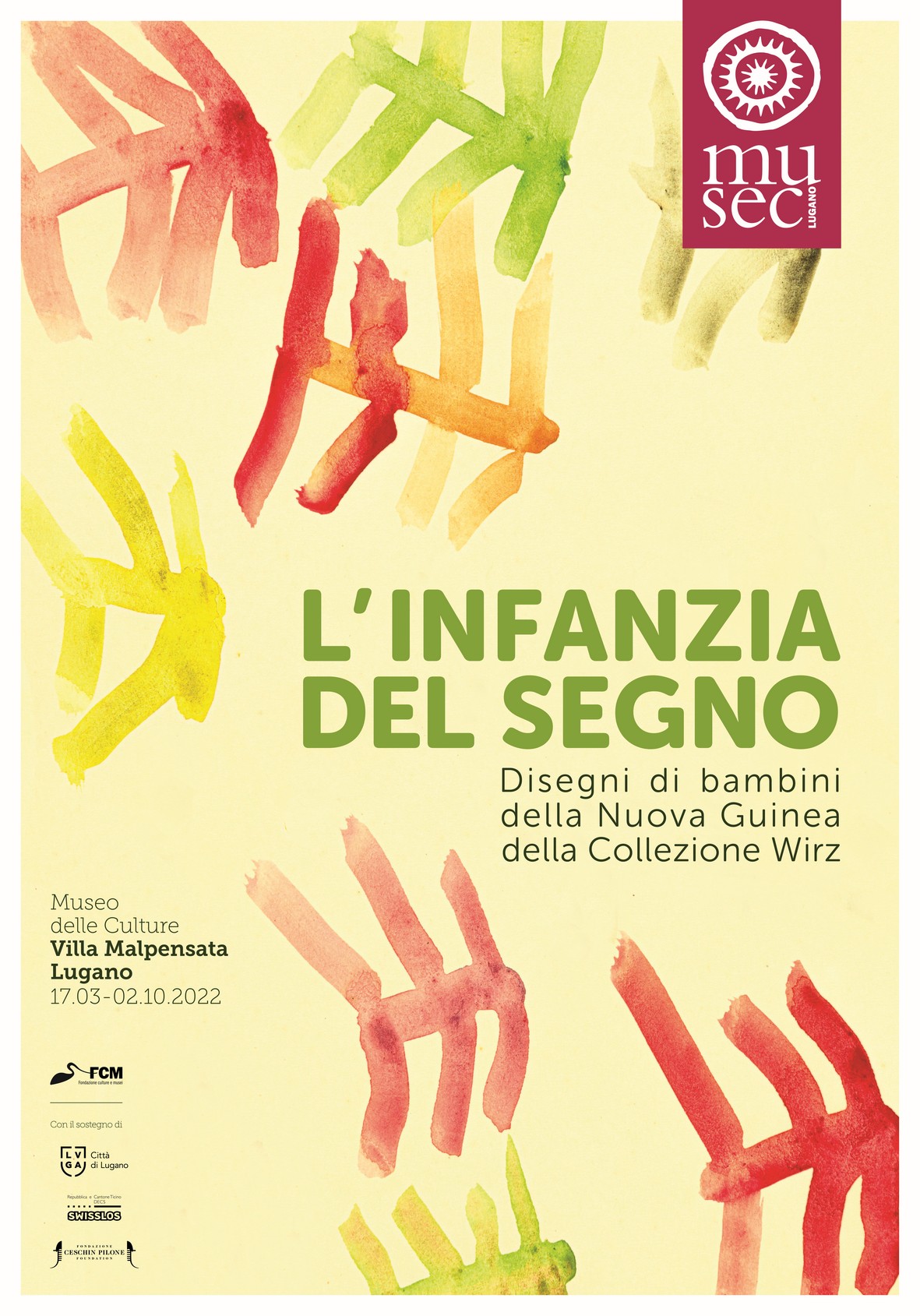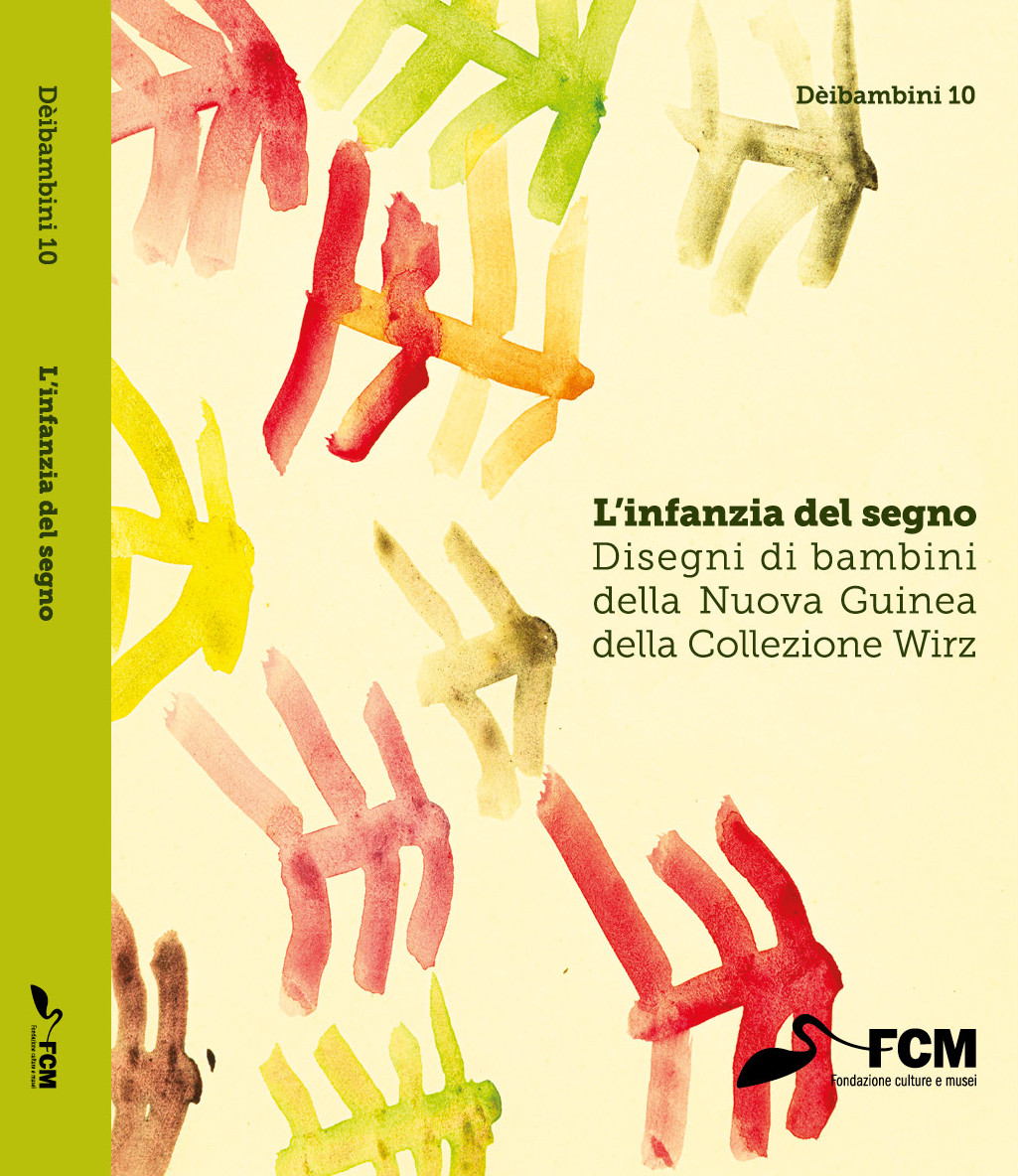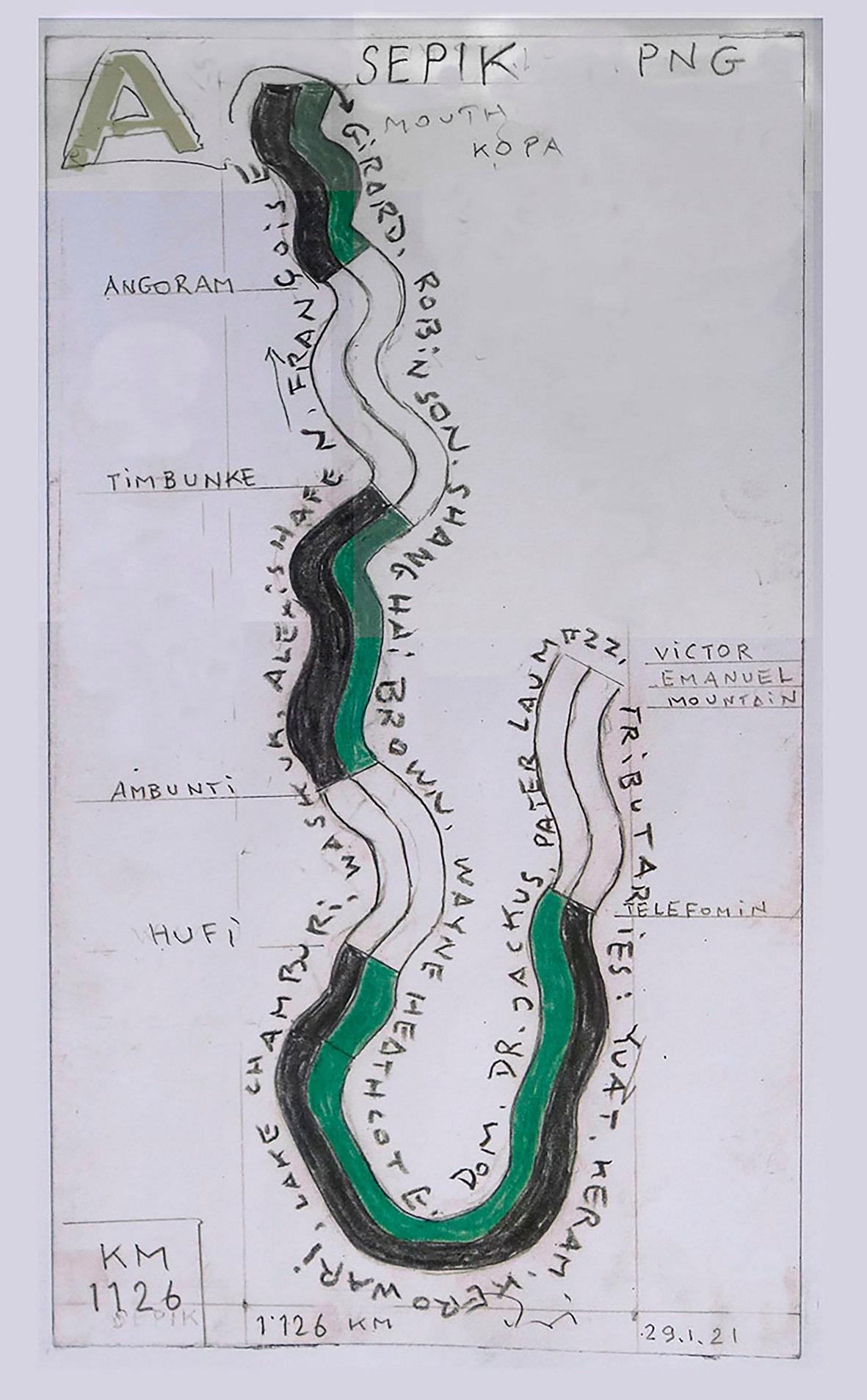Museo delle Culture uses cookies to improve the user experience. If you need more information click on the privacy page. Privacy policy X
17 March 2022 - 02 October 2022, VILLA MALPENSATA, SPAZIO MARAINI
The temporary exhibition " The Infancy of signs. Drawings of New Guinean Children from the Wirz Collection" is the tenth episode of MUSEC successful “Dèibambini” series, which took place at the Villa Heleneum (the previous location of the museum) between 2006 and 2014.
The move of the museum to Villa Malpensata marked an interruption of the original project, but at the same time stimulated a critical rethinking of its methods. The idea of conceiving the museum as a privileged place for the making of "virtual universes" on a child's scale is maintained and the works of children's art of the past considered as a starting point and model for the thematic elaboration of expressive grammars.
The idea is to build a bridge between yesterday and today, through the in-depth exploration of the expressive contents of specific and precise experiences of children's creativity. Contents that not only interconnect cultures with a formidable and substantial unity, but also that played a role of inexhaustible source for the renewal of artistic languages of the 20th century.
The words of Francesco Paolo Campione, Director of MUSEC and creator of the series dedicated to children's creativity, are full of hope: "My deepest wish, as the "Dèibambini" project comes back to life, is that our bridge may be solid and full of poetry, linking generations of young artists through the use of drawing, painting and sculpture. These are tools within everyone's grasps and they allow free and autonomous appropriation of spaces of an imagination. An imagination that is perhaps all too threatened today by an uncontainable invasion of technology'".

In 1952, Swiss artist Dadi Wirz (b. 1931) went on a trip to New Guinea with his father Paul, one of the most famous ethnologists and collectors of the 20th century.
Following a project based on some early post-war educational theories, Dadi gave pencils and paints to the children he met in the villages, collecting hundreds of drawings over the course of a year. He noted the name of the author on the back of the sheets and, in several cases, the presumed age and village of origin. The result is a unique collection of 229 children's drawings. All together they constitute an extraordinary document that questions our view of childhood and interprets the profound reasons for creativity.
The drawings were preciously preserved by the artist until 2020, when he donated them to MUSEC, which ensured their restoration and conservation in accordance with modern museological principles.
The children’s works show basic shapes that recur throughout the graphic production of children, such as the circle, the square, the triangle and the spiral. Signs that seem to acquire original meanings in relation to the specific visual and cultural context of origin.
With the aim of restoring the deeper value of the graphic system of the "children of Wirz", the curatorial project by Anna Castelli and Isabella Lenzo Massei proposes a comparison, not only visual and emotional, with two different artistic genres. On the one hand, traditional sculptures from the Sepik River area (where many of the young artists lived), which link the discourse to its historical sources. On the other hand, works by New Guinean artists, assessing the significance of the children's drawings in relation to the contemporary art of the Island; a contemporary art reworking traditional forms of iconography and recounting the complex cultural interaction between the natives of New Guinea and the West.
%20.%20Paua%20New%20Guinea,%201953.%20©FCM,%20MUSEC-web.jpg)
Kanjipungaman's drawing, 7 years old, Kanganaman Village, Sepik. Dadi Wirz Collection. ©FCM/MUSEC, Lugano
There are 79 drawings of New Guinean children on display at Spazio Maraini in Villa Malpensata, all made between 1952 and 1953. The children's drawings come together with 7 serigraphs on paper from the Weltkulturen Museum in Frankfurt am Main made by Timothy Akis (c. 1944-1984) and Mathias Kauage (c. 1944-2003) — two Papua New Guinean artists who belong to the same generation of the young artists featured in the exhibition — and 11 works of Sepik ethnic art from the Brignoni Collection (MUSEC). The ethnic art works are exhibited both in the Spazio Maraini, with the children's drawings, and in the Spazio Tesoro, together with a video interview with Dadi Wirz, conducted at the end of 2021 by Moira Luraschi and Paolo Maiullari, researchers at MUSEC.
The catalogue that accompanies the exhibition is the result of a long interdisciplinary research and provides a precious opportunity to investigate our way of seeing childhood and interpreting the deep reasons for creativity. The graphic design by Valeria Zevi is a restyling of the original graphic project of the Maurice Hoderas series.
L’infanzia del segno. Disegni di bambini della Nuova Guinea della Collezione Wirz, edited by Anna Castelli and Isabella Lenzo Massei, Dèibambini/10, Edizioni Fondazione culture e musei, Lugano 2022. 244 pages. ISBN 978-12-80443-15-1. With an introduction by Francesco Paolo Campione (Il progetto "Dèibambini"), some research notes by Dadi Wirz ("L'arte dei bambini della Nuova Guinea. Alcune concise osservazioni"); an interview with Dadi Wirz by Moira Luraschi ("Un tesoro a lungo segreto") and texts by Isabella Lenzo Massei ("L'eco del segno"), Christian Kaufmann ("I bambini di Dadi Wirz") and Anna Castelli ("Vedere nel disegno"). The volume is completed by reproductions of 229 children's drawings from the Wirz Collection; 15 black and white photographs and 1 drawing by Dadi Wirz; 7 serigraphs by Timothy Akis and Mathias Kauage (New Guinea) and 11 works from the Sepik (New Guinea) stylistic area belonging to the Brignoni Collection (MUSEC).

The cover of the tenth project of the Dèibambini series
Dadi Wirz was born in Basel in 1931, he spent his childhood and youth in a continuous wandering, alongside his father Paul, an ethnologist, traveller and one of the most famous collectors of the 20th century. In the 1940s, partly to escape the climate of war, he lived for a long time in South America, Sri Lanka and the Dominican Republic.
After obtaining a Swiss federal licence as a photographer, Wirz attended the Académie André Lhote in Paris in the early 1950s, where he met, among others, Calder, Ernst, Giacometti, and Arp.
At the end of 1952, in his early twenties, he accompanied his father on a long journey through New Guinea. From here, in 1954, he moved to Brazil, in search of new languages to stimulate his creative experience. After his father's death in 1955, Wirz decided to undertake a second and even more demanding research trip to New Guinea, feeling an urgent need to get to know and portray a world whose imminent twilight he perceived.

Handmade coloured drawing by Dadi Wirz. Title: Sepik km 1126, from Fluss Portrait collection.Property of the Author